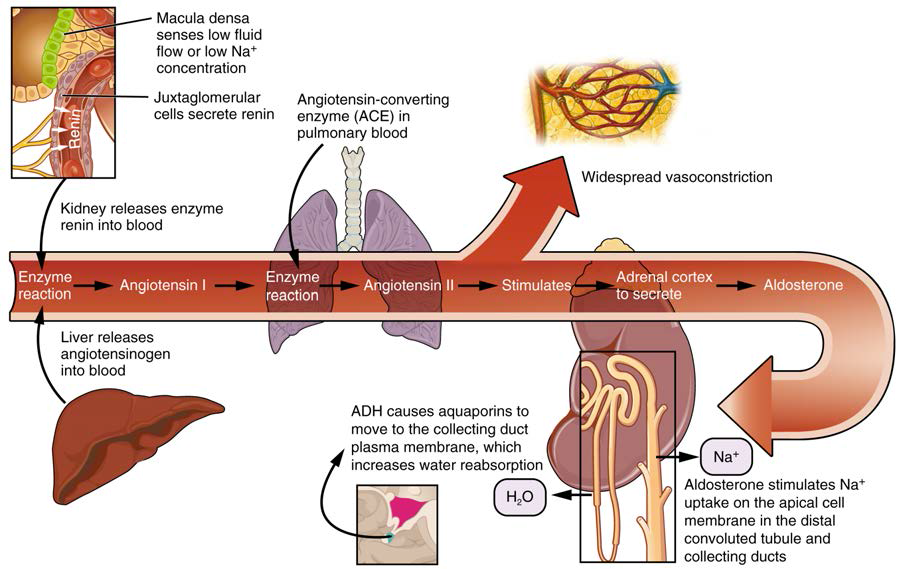WBR0516
| Author | [[PageAuthor::Gonzalo A. Romero, M.D. [1]]] |
|---|---|
| Exam Type | ExamType::USMLE Step 1 |
| Main Category | MainCategory::Physiology |
| Sub Category | SubCategory::Renal, SubCategory::Vascular |
| Prompt | [[Prompt::A 32-year-old woman delivers a 38-week-old boy after a non-controlled pregnancy. She is known hypertensive and was taking enalapril to control her blood pressure before becoming pregnant. She assisted to her first trimester control, when the physician told her that it was necessary to stop her medication because it can cause many fetal problems. Regardless of medical advice, she continued taking enalapril. Upon delivery and physical examination, the newborn is suspected to have malformations and renal damage after the chronic in-utero exposure to this drug. Which of the following changes in an adult's kidney physiology occurs with the use of enalapril?]] |
| Answer A | AnswerA::Increase in FF, increase in GFR and decrease in RPF |
| Answer A Explanation | [[AnswerAExp::Incorrect. Corresponds to the AT-II functions]] |
| Answer B | AnswerB::Decrease FF, decrease GFR and increase RPF |
| Answer B Explanation | [[AnswerBExp::Correct. ACE inhibitor effect]] |
| Answer C | AnswerC::No change in FF, decrease in GFR and decrease in RPF |
| Answer C Explanation | [[AnswerCExp::Incorrect. Constriction of afferent arteriole]] |
| Answer D | AnswerD::Increase in FF, Increase in GFR and no change in RPF |
| Answer D Explanation | [[AnswerDExp::Incorrect. Corresponds to hypoalbuminemia]] |
| Answer E | AnswerE::Decrease in FF, decrease in GFR and no change RPF |
| Answer E Explanation | [[AnswerEExp::Incorrect. Corresponds to hyperalbuminemia]] |
| Right Answer | RightAnswer::B |
| Explanation | [[Explanation::* Enalapril is an ACE (angiotensin converting enzyme) inhibitor medication used to treat hypertension. ACE inhibitors and aldosterone receptor blockers are associated with many fetal malformations if used during pregnancy (teratogenic), especially renal damage.
 Educational Objective:
|
| Approved | Approved::Yes |
| Keyword | WBRKeyword::Filtration fraction, WBRKeyword::GFR, WBRKeyword::ACE inhibitor, WBRKeyword::enalapril |
| Linked Question | Linked:: |
| Order in Linked Questions | LinkedOrder:: |